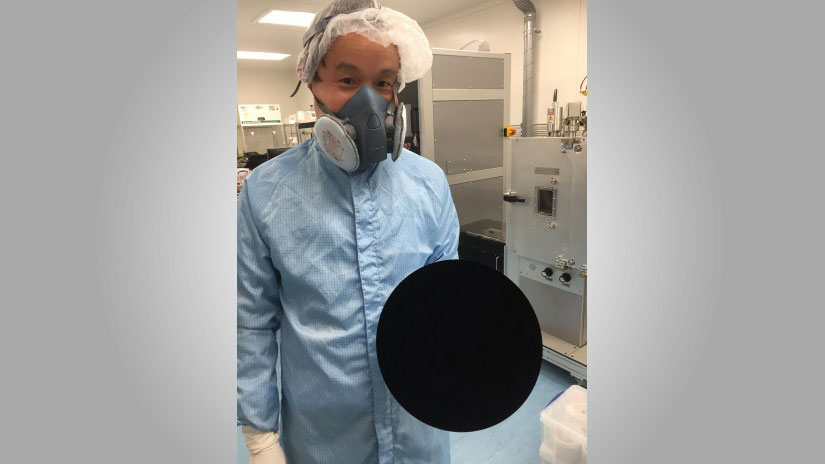Pictures that started circulating online again recently have people wondering if they’re looking at a poor Photoshop job, but they’re actually seeing the absence of light in the material.
Vantablack (Vertically Aligned Nanotube Array BLACK) can absorb 99.965 percent of ultraviolet (UV), visible and infrared (IR) light. British researchers at Surrey NanoSystems helped developed the material, and its properties can be used on telescopes as well as making objects seemingly disappear.
“For example, it reduces stray-light, improving the ability of sensitive telescopes to see the faintest stars, and allows the use of smaller, lighter sources in space-borne black body calibration systems. Its ultra-low reflectance improves the sensitivity of terrestrial, space and air-borne instrumentation”, Chief Technology Officer Ben Jensen said in 2014.
Some think Vantablack is a paint, but it’s really a “forest” of carbon nanotubes. The company states each nanotube has a diameter of 20 nanometers (0.00000002 meters), and that one square centimeter of Vantablack would contain around 1 billion nanotubes. Scientists “grow” the nanotubes under high heat conditions, and only to a height of .
For the human eye to see an object, light must be reflected off of it. In Vantablack’s case, the vast majority of light does not hit a nanotube, instead going between them and being absorbed as it is reflected among the tubes. Surrey NanoSystems compares this to walking through a forest where the trees are 3 km (9,800 feet) tall instead of 30-60 feet tall.
SNS showed off a new coating in 2016 that is so black it cannot be measured by their spectrometers.
Before you try and place an order, note that Vantablack is subject to United Kingdom export legislation and isn’t the sturdiest of materials. SNS notes Vantablack “is easily damaged by any direct impact or abrasion,” but is able to withstand the extremes of a rocket launch.
There is a “spray-on” form of Vantablack, but it reflects (only) 99.8 percent of visible light. While it look like something a Looney Toons character would use, the object is still there.
One of our @royalsociety funded placement students demonstrating a new super-black, carbon nanotube free coating he's working on #Vantablack pic.twitter.com/BlIIhNtsQS
— Surrey NanoSystems (@SurreyNanoSys) October 28, 2016
TAP HERE to learn more about Vantablack.


